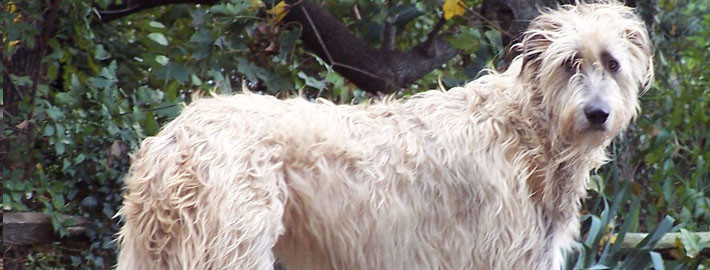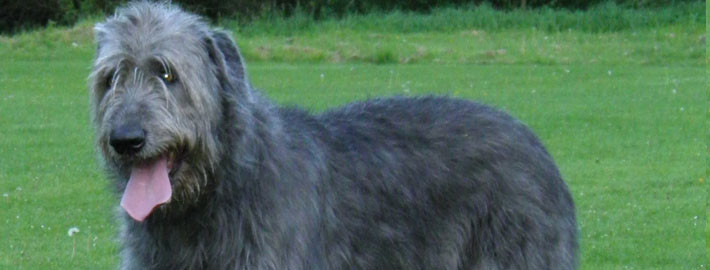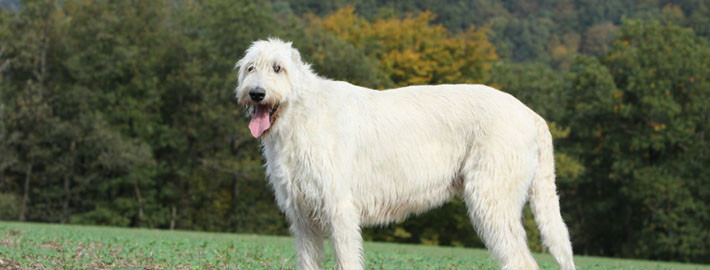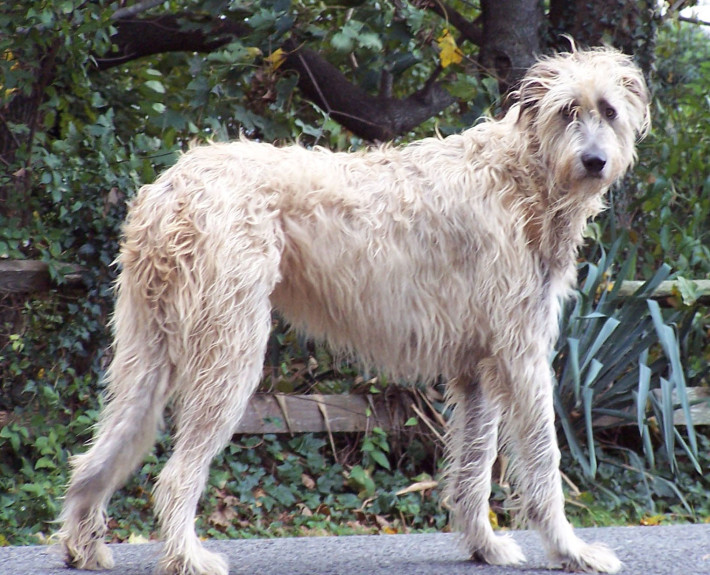What makes the Irish Wolfhound Unique?
Although they are enormous dogs, Irish Wolfhounds are generally friendly and sweet tempered. This large breed gets along great with members of their own family including children and other dogs. However, their short lifespan, imposing stature, and need for wide open spaces mean that this lovable breed isn’t for everyone.
Breed Groups
Page Contents
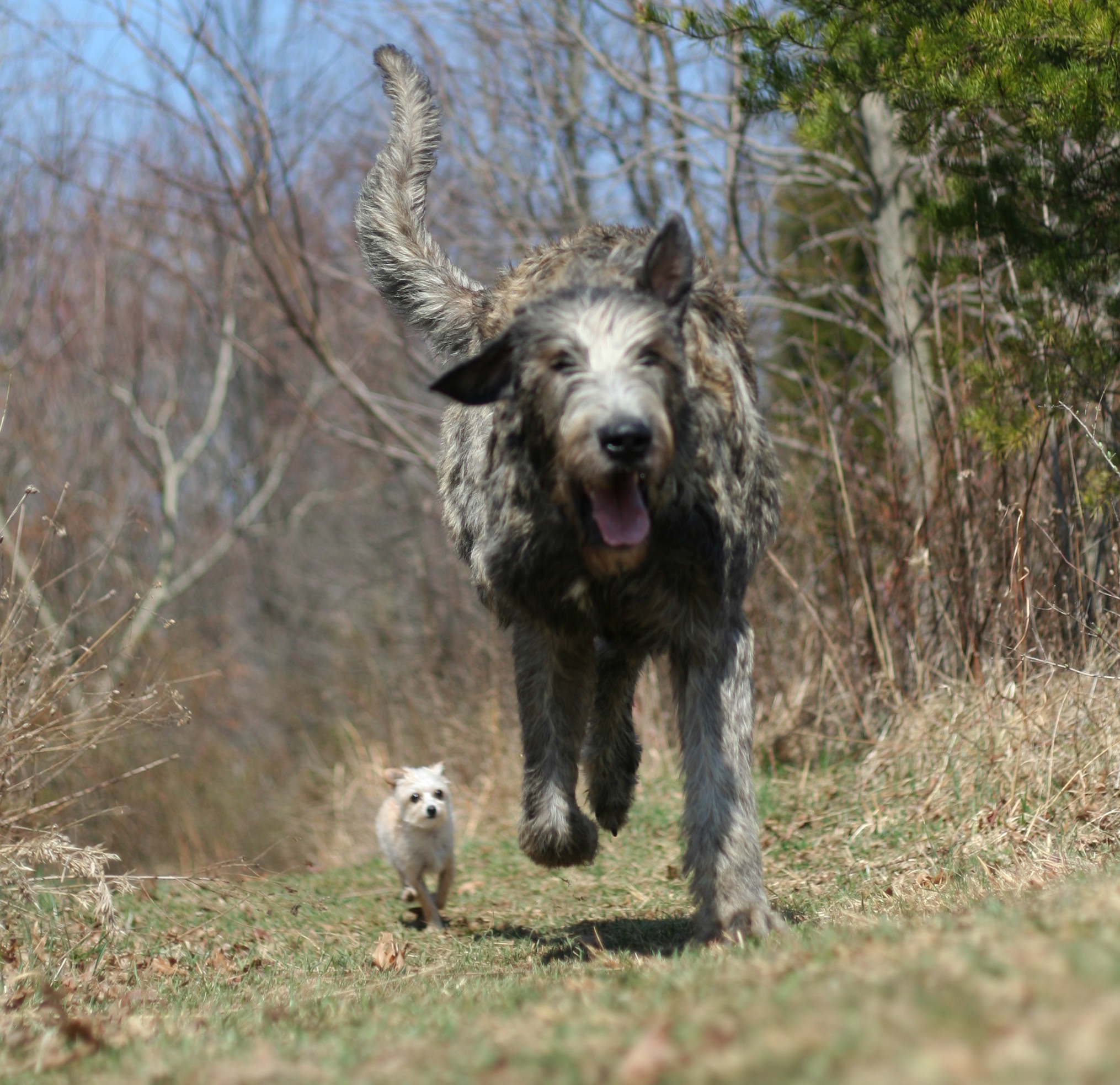
Is the Irish Wolfhound Right For You?
Irish Wolfhounds are friendly enough around members of their own families but they don’t show the same affectionate side of thier personalities to strangers. Although these dogs are wary of unfamiliar people, they are nonetheless quite polite in terms of behavior. Members of this breed do not make good estate guardians because they were bred to look after people rather than property. However, Irish Wolfhounds will fearlessly defend their family members if they feel that someone is threatening one of them.
In 5 Words
- Loyal
- Generous
- Thoughtful
- Sweet-tempered
- Dignified
Characteristics
Learn About the Irish Wolfhound
Description
General Description
Irish Wolfhounds are one of the tallest dog breeds in the world and some have even grown large enough that they could be mistaken for ponies. These shaggy coated canines greatly resemble Greyhounds in body structure. Although they are sizeable dogs, Irish Wolfhounds have graceful gaits and they move about with ease. These dogs typically have wide skulls, long heads, pointy muzzles and broad chests. Irish Wolfhounds also possess small ears that normally lie flat against their heads but prick up when they are interested in something. Lengthy, arched necks are yet another breed feature. These dogs have long, well-muscled legs with rounded feet and arched toes. Their curved tails are long and hang at a downwards angle.
Size
According to American Kennel Club standards, “the minimum height and weight of dogs should be 32 inches and 120 pounds; of bitches, 30 inches and 105 pounds.” This organization further states that the ideal size for Irish Wolfhounds is between 32 and 34 inches tall at the shoulder. Naturally, these standards do vary slightly between the various breed clubs.
Coat
Members of this breed possess a coarse double coat that is longer under their jaws and around their eyes than it is on the rest of their bodies. This thick fur help protect Irish Wolfhounds against cold weather and also the teeth of their adversaries. Although most of these dogs are gray, other acceptable coat colors for members of this breed include brindle, red, black, white, and fawn hues.
Short History of the Irish Wolfhound
Irish Wolfhounds have a long history that dates back to around the 4th century. These dogs owe their name to their earliest job description, which was eradicating wolves. Of course, members of this breed also served as war dogs, livestock guardians, and general game hunters. They were typically owned by members of the royal family and kings often gave these dogs as presents to favored courtiers.
However, Irish Wolfhounds were a bit too good at the task for which they were named. Wolves and wild boars eventually become extinct in Ireland as a result of these dogs’ efforts. The breed subsequently declined in popularity and the few remaining specimens remained in the hands of old aristocratic families. Thanks to the efforts of a British military officer named Captain George Graham the breed was restored to its’ former glory during the 1850s. At this time, Scottish Deerhounds, Borzois, English Mastiffs, and Great Danes were all thought to have been added to the existent bloodlines.
By 1885, the Irish Wolfhound Club had been founded. Twelve years later the breed achieved official American Kennel Club recognition as part of their hound group. The Irish Guards even adopted a member of this breed as their mascot in 1902. The English Kennel Club granted the Irish Wolfhound breed a place in their club in 1925. Currently, Irish Wolfhounds are the 70th most popular type of dog in the American Kennel Club’s breed registry.
Temperament
While these dogs have a number of personality quirks that vary amongst individuals, there are some traits that seem more common than not in Irish Wolfhounds. Despite their somewhat intimidating size, most of these dogs have sweet dispositions and easygoing personalities that make them amenable to kids and other canines. Members of this breed generally become quite attached to the dogs and human beings that they knew growing up.
It is also true that these dog will sometimes get along with cats. However, Irish Wolfhounds have a high prey drive that can lead them to chase and kill cats if the animals are left together outdoors without proper supervision. Members of this breed may also instinctively chase other dogs but this is a game for them rather than a way of showing aggression.
Irish Wolfhounds are friendly enough around members of their own families but they don’t show the same affectionate side of thier personalities to strangers. Although these dogs are wary of unfamiliar people, they are nonetheless quite polite in terms of behavior. Members of this breed do not make good estate guardians because they were bred to look after people rather than property. However, Irish Wolfhounds will fearlessly defend their family members if they feel that someone is threatening one of them.
These quiet dogs are also typically calm and well behaved indoors provided they are not left alone for copious amounts of time. However, Irish Wolfhounds should only be part of households that have enough space to accommodate them and there should ideally be at least one person in their family group with the ability to get the dog in question from the car to a place where it can be seen about for the duration of its’ illness if it should become sick. Owners of this breed will need also cars that are large enough to comfortably hold their pets.
Caring for Your Irish Wolfhound
General Health
Irish Wolfhounds are a short lived breed with an average lifespan of 6 to 8 years. These dogs do occasionally suffer from bone cancer, progressive retinal atrophy, hip dysplasia, Von Willebrand’s disease, bloat, and cardiomyopathy.
Care
Daily
Members of this breed will need a short daily walk.
Weekly
It is important for owners to clean their dog’s teeth a few times per week using a canine toothbrush and a vet-approved toothpaste that so that the individual in question maintains good oral health. Irish Wolfhounds also will need to be brushed several times per week to keep their coats free of mats and tangles.
Monthly
Parasite prevention medications are a must for all dog breeds. Typically, these products are administered once a month for best results.
Grooming & Bathing
Irish Wolfhounds that are destined for the show ring require copious amounts of grooming. However, most pet owners don’t need to do more than brush their dogs several times per week. Members of this breed shed moderate amounts of fur on a regular basis and owners that don’t pay enough attention to their pet’s grooming needs may find their households covered in pet hair. It is also a good idea to make sure that their nails are trimmed about twice a month so that injuries don’t occur, but Irish Wolfhounds only need to be bathed if they get dirty.
Exercise & Training
Irish Wolfhounds were bred to be independent thinkers but they are nonetheless quite easy to train. Consistent rules and gentle hand go far in helping these dogs learn their lessons. Although they do not have extensive exercise requirements, members of this breed will need to have plenty of space to run around. Puppies of this breed should receive less exercise than their adult contemporaries because extensive workouts can be detrimental to their health while they are still growing.

